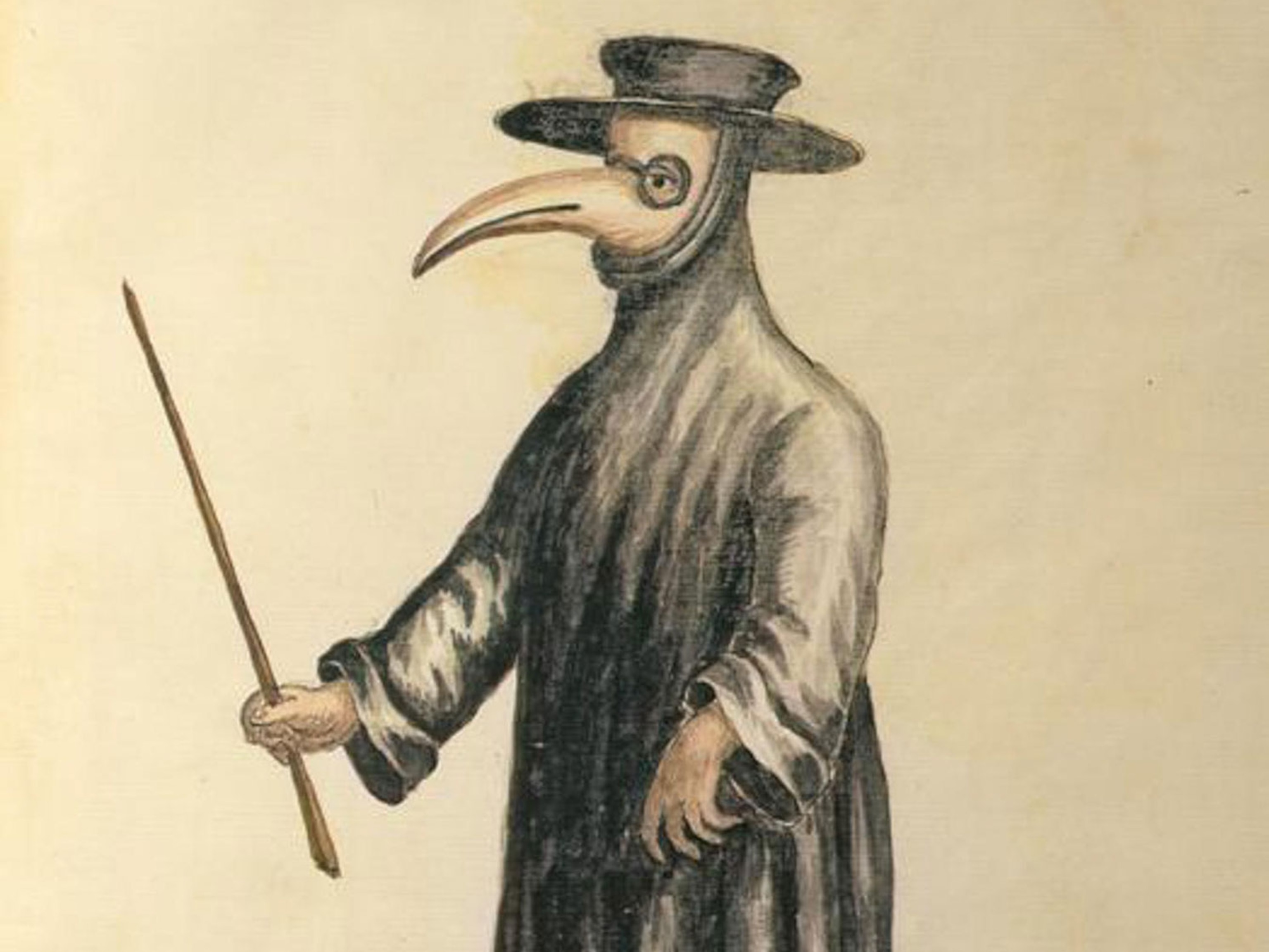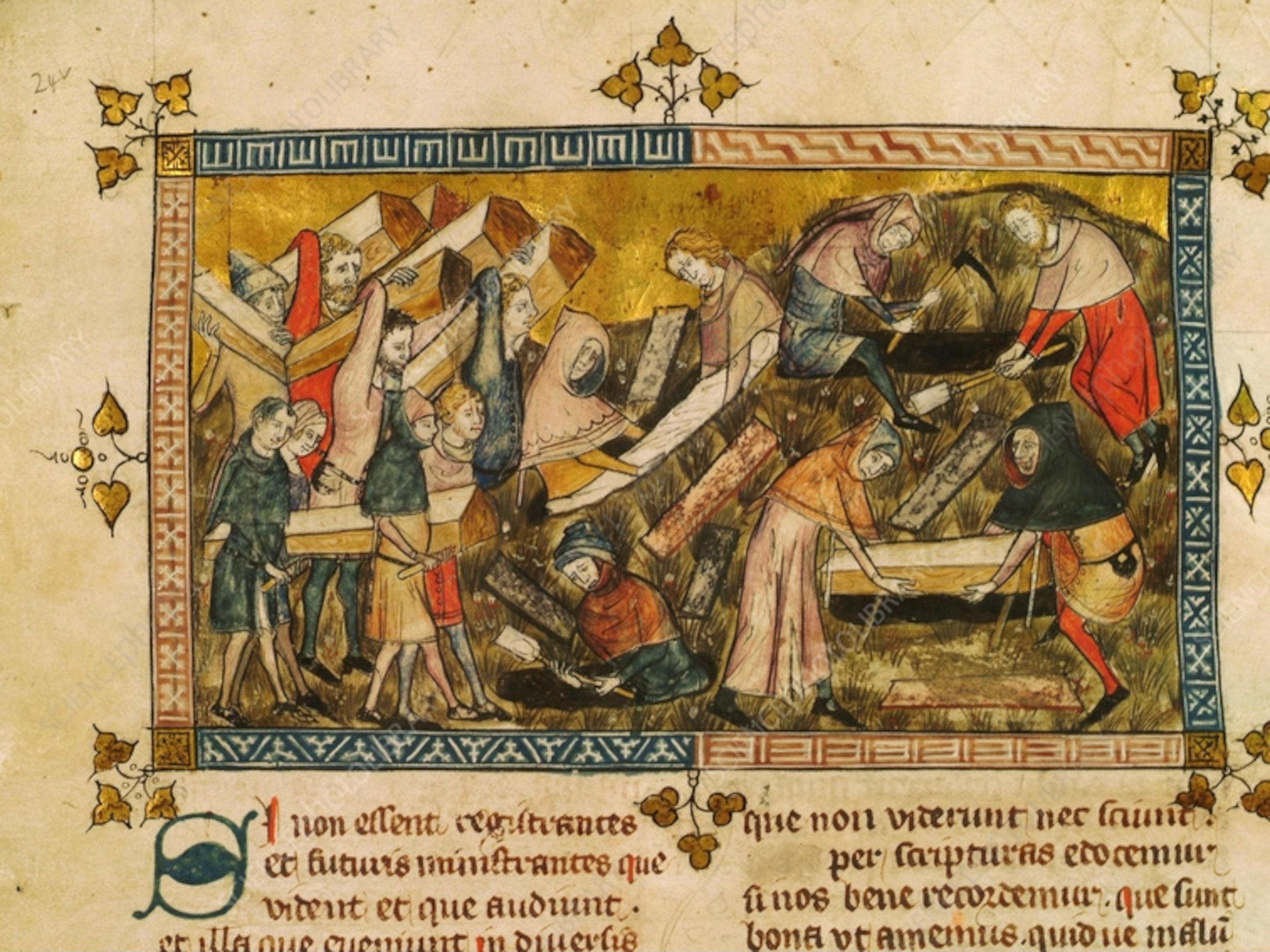
Spawn of Medieval "Black Death" Bug Still Roam the Earth
Plague bacterium has changed little in 600 years, DNA study shows.
The Black Death in medieval Europe was more than the deadliest plague outbreak on record: The epidemic appears to be responsible for the cases of plague that still infect humans today.
The new findings are based on bacteria recovered from skeletons found in a mid-1300s cemetery for Black Death victims in London, England. The grave excavation was undertaken by Museum of London Archaeology.
(Related story and pictures: "Mass Plague Graves Found on Venice 'Quarantine' Island.")
Kirsten I. Bos of McMaster University in Ontario, Canada, and Verena J. Schuenemann of the University of Tübingen in Germany led an effort to sequence the genome of the Black Death pathogen, Yersinia pestis, recovered from the medieval grave.
After examining Y. pestis samples from 46 teeth and 53 bones, the team determined that the plague hasn't changed much, genetically speaking, in more than 600 years.
The result "indicates that contemporary Y. pestis epidemics have their origins in the medieval era," the study team writes.
(See "'Vampire of Venice' Unmasked: Plague Victim & Witch?")
Plague Made Leap From Soil to People
Plague was already known to have evolved from a related soil-dwelling bacterium. The Black Death version of the pathogen has an additional segment of DNA that allows it to infect humans.
Once plague made that leap, the pathogen spread wildly, carried by fleas that in turn traveled on rats—common hitchhikers on cargo ships and other trade vehicles.
(Related: "Bubonic Plague Traced to Ancient Egypt.")
When the plague arrived in Europe in the 1340s, it killed about 30 to 50 million people—or up to half the continent's population—in five years.
Once infected with Y. pestis, a person can develop bubonic plague, an infection of the lymph nodes, or the rarer pneumonic plague, a secondary infection of the lungs.
Modern Plague Followed Linear Evolution
Today, plague is still spread mainly by fleas on burrowing rodents. The disease hits up to 3,000 people worldwide—most commonly in the U.S., Madagascar, China, India, and South America.
With treatment, 85 percent of modern victims survive the plague.
The fact that the bacterial genome has been slow to change hints that modern medical knowledge and general susceptibility—not a less virulent version of Y. pestis—may be why the plague no longer devastates populations.
The slow change could be partly because just one strain of plague exists worldwide, and so the bacteria can evolve only in linear fashion.
By contrast, influenza "can change very rapidly due to recombination between co-circulating strains, which ultimately led to the tremendously virulent 1918 strain," said study co-author Hendrik Poinar of McMaster University.
(See "'Bird Flu' Similar to Deadly 1918 Flu, Gene Study Finds.")
The 1918 flu killed at least 50 million people—more than World War I—and was especially remarkable because it hit healthy adults rather than just the elderly and the very young.
Due to the plague's slow evolution, today's antibiotics are effective against modern Y. pestis—and the drugs would have been effective against the Black Death, too.
"This again emphasizes the power of modern-day medicine and the antibiotic toolkit we have at our disposal," Poinar said.
The Black Death DNA study is published in this week's issue of the journal Nature.





